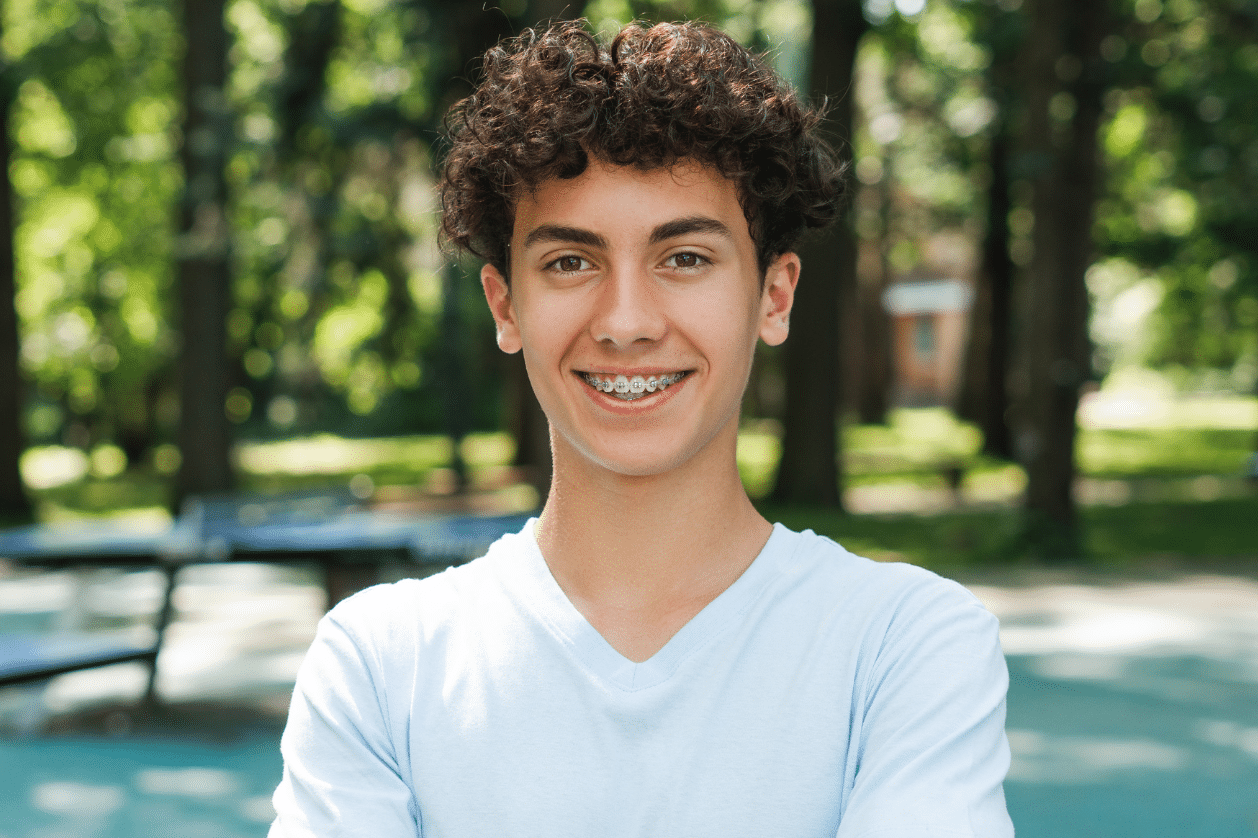Braces vs Invisalign: Choosing the Right Option for You

Whether you’re a parent exploring options for your child or an adult looking to improve your smile, understanding the differences between Invisalign and traditional braces is essential to making an informed decision.
Our team—Dr. Amir Davoody, Dr. Rana Mehr, and Dr. Panagiotis Kyteas—is here to help you compare both options and guide you toward the best solution for your unique smile.
What’s the Difference Between Braces and Invisalign?
Both braces and Invisalign are highly effective tools for straightening teeth, but they differ in how they look, feel, and work with your lifestyle.
Invisalign Clear Aligners
Invisalign uses a series of clear, removable aligners to gradually shift your teeth into place. These custom trays are nearly invisible and designed for comfort and convenience.
Key Benefits of Invisalign:
- Virtually invisible when worn
- Removable for meals and oral hygiene
- Smooth and custom-fit for minimal irritation
- Suitable for mild to moderate alignment issues
Traditional Metal or Ceramic Braces
Braces use brackets and wires attached directly to your teeth to move them into alignment. They’re a tried-and-true solution for more complex orthodontic issues.
Key Benefits of Braces:
- Effective for even the most complex cases
- Fixed to your teeth—no risk of forgetting to wear them
- Options include metal and clear ceramic brackets
- Often ideal for children and teens
Braces vs Invisalign: How to Choose the Right Treatment
Deciding between Invisalign or braces depends on several important factors that we evaluate during your consultation.
Age and Lifestyle Considerations
- Invisalign is often preferred by adults and image-conscious teens who want a more discreet solution.
- Braces are great for younger patients or individuals who may have trouble consistently wearing aligners.
Treatment Complexity
- Invisalign is ideal for treating mild crowding, spacing, and minor bite issues.
- Braces are recommended for patients with severe misalignment, overbites, underbites, and other complex conditions.
Maintenance and Oral Hygiene
Invisalign:
- Easy to clean—just remove and rinse
- Allows for normal brushing and flossing
- Requires discipline to wear 20–22 hours daily
Braces:
- Require special tools to clean around wires and brackets
- Can cause some discomfort after adjustments
- Always in place—no risk of forgetting to wear
Office Visits and Adjustments
- Braces often require more frequent visits for wire adjustments and monitoring.
- Invisalign patients typically receive multiple sets of aligners at once, reducing the number of in-office appointments.
Personalized Orthodontic Care in Houston, TX
At Greater Houston Orthodontics, we believe that no two smiles are the same. That’s why Dr. Davoody, Dr. Mehr, and Dr. Kyteas create fully customized treatment plans tailored to your bite, alignment, and goals.
Our team offers both Invisalign clear aligners and traditional braces to patients across the Houston area. Using advanced digital technology, we provide precise diagnostics and a comfortable, results-driven experience.
Whether you’re searching for adult orthodontics, braces for teens, or Invisalign in Houston, TX, we’re committed to helping you feel confident in your treatment choice.
Schedule Your Free Orthodontic Consultation in Houston
Still debating between braces vs Invisalign? The best way to decide is by speaking with a specialist. At Greater Houston Orthodontics, we offer complimentary consultations so you can explore your options with confidence.
Let Dr. Amir Davoody, Dr. Rana Mehr, and Dr. Panagiotis Kyteas help you take the next step toward a healthier, straighter smile.